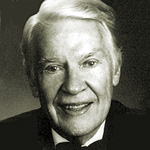“Fly Me to the Moon”, originally titled “In Other Words”, is a song written in 1954 by Bart Howard. Kaye Ballard made the first recording of the song the year it was written. Frank Sinatra’s 1964 version was closely associated with the Apollo missions to the Moon.
Kaye Ballard made the song’s first commercial recording, released by Decca in April 1954. A brief review published on May 8, 1954 in Billboard said that “In Other Words” was “...a love song sung with feeling by Miss Ballard.” This recording was released as the flipside of “Lazy Afternoon”, which Kaye Ballard was currently performing as star of the stage show The Golden Apple.
Over the next few years, jazz and cabaret singers released cover versions of “In Other Words” on EP or LP record albums, including Chris Connor, Johnny Mathis, Portia Nelson, and Nancy Wilson. Eydie Gormé sang the song on her 1958 album Eydie In Love, which reached #20 in the Cashbox Album Charts and was nominated for a Grammy Award.
In 1960, Peggy Lee released the song on the album Pretty Eyes, then made it more popular when she performed it in front of a large television audience on The Ed Sullivan Show. As the song’s popularity increased, it became better known as “Fly Me to the Moon”, and in 1963 Peggy Lee convinced Bart Howard to make the name change official. Connie Francis released two non-English versions of the song in 1963: in Italian as “Portami Con Te” and in Spanish as “Llévame a la Luna”.
In 1962, Joe Harnell arranged and recorded an instrumental version in a bossa nova style. It was released as a single in late 1962. Harnell’s version spent 13 weeks on the Billboard Hot 100 chart, reaching #14 on February 23, 1963, while reaching #4 on Billboard’s Middle-Road Singles chart. Harnell’s version was ranked #89 on Billboard’s end of year ranking “Top Records of 1963”. Harnell’s recording won him a Grammy Award at the 5th Annual Grammy Awards for Best Performance by an Orchestra – for Dancing.[22][23] His version was included on his album Fly Me to the Moon and the Bossa Nova Pops released in early 1963, which reached #3 stereo album on the Billboard Top LP’s chart.
Paul Anka released a version of “Fly Me To The Moon” in 1963.
Frank Sinatra included the song on his 1964 album It Might as Well Be Swing, accompanied by Count Basie.[26] The music for this album was arranged by Quincy Jones, who had worked with Count Basie a year earlier on the album This Time by Basie, which also included a version of “Fly Me to the Moon”. Will Friedwald commented that “Jones boosted the tempo and put it into an even four/four” for Basie’s version, but “when Sinatra decided to address it with the Basie/Jones combination they recharged it into a straight swinger… [which]...all but explodes with energy”. Bart Howard estimated that by the time Frank Sinatra covered the song in 1964, more than 100 other versions had been recorded.
Bobby Womack recorded a version that was released in 1968 on Minit Records, from his album Fly Me to the Moon. His rendition reached #52 on the Billboard Hot 100 and #16 on the R&B chart.
Occasionally during the CBS-TV series WKRP, an instrumental sampling of “Fly Me To The Moon” was used as a doorbell melody during scenes taking place in the apartment of character Jennifer Marlowe.
By 1995, the song had been recorded more than 300 times. The Japanese animated series Neon Genesis Evangelion uses several versions of the song sung by Claire Littley, Yoko Takahashi, and various female cast members of the series for the closing music of each episode; the song was removed from the 2019 Netflix re-release in most regions due to licensing issues, much to the dismay of fans.
In the 2009 Video Game Bayonetta a remix of Fly Me To The Moon titled Fly Me To The Moon (Climax Mix), sung by Helena Noguerra, is used as the game’s battle theme.


